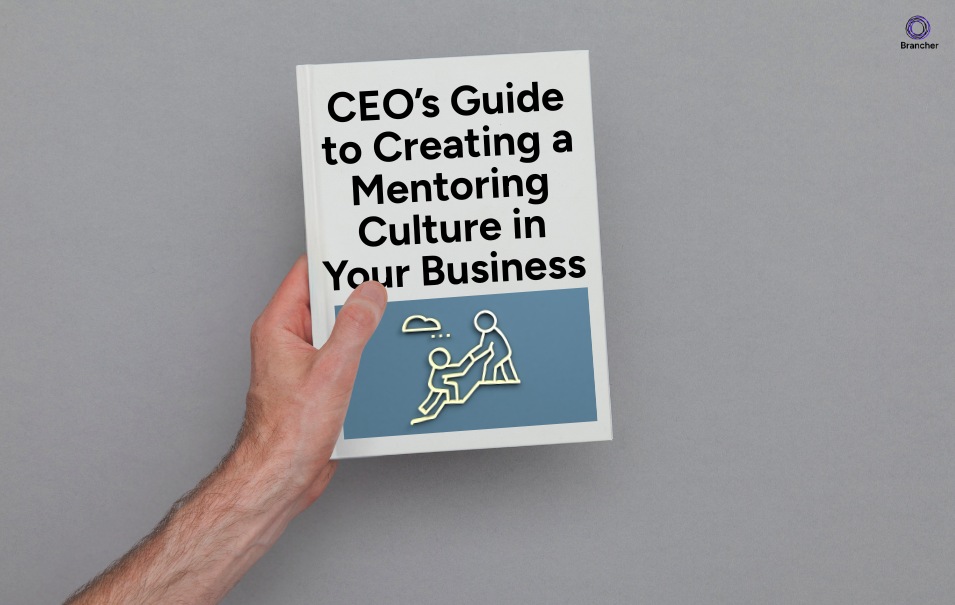
Creating a mentoring culture fosters leadership, growth, and engagement. Learn how to build it in your organisation.
Strong organisations are built on strong people. For CEOs and executive leaders, creating a mentoring culture is one of the most effective ways to unlock potential, build capability, and drive sustainable growth from within.
When mentoring becomes part of the day-to-day employee experience, it delivers benefits far beyond individual development. It encourages knowledge sharing, strengthens leadership pipelines, and reinforces the values that guide your organisation.
More than just a program or policy, mentoring is a cultural shift — one that starts at the top and ripples throughout every level of the business. As a CEO, building a mentoring culture isn’t just a nice initiative for HR — it’s a strategic imperative. Here’s how to lead the charge.
Why Mentoring Should Be on Every CEO’s Radar
Mentoring has evolved far beyond the traditional senior-to-junior dynamic. Today, it’s a vital mechanism for fostering collaboration, inclusion, and continuous learning across all levels of an organisation.
A culture of mentoring helps to:
- Boost employee engagement and retention
- Strengthen leadership capabilities
- Encourage knowledge sharing and innovation
- Promote diversity, equity, and inclusion
- Enhance organisational resilience and adaptability
When employees feel supported, seen, and challenged, they’re more likely to stay, grow, and perform — and that begins with a workplace culture where mentoring is the norm, not the exception. When combined with leadership support for employee well-being, the impact is even greater:
- When employees believe their CEO values a mentally healthy workplace, 75% consider their workplace mentally healthy, compared to just 8% when they do not believe their CEO values mental health. [TNS Social Research, State of Workplace Mental Health in Australia]
- 91% of Australian employees say it is important to work in a mentally healthy environment, but only 52% agree their workplace is actually mentally healthy. [TNS Social Research, State of Workplace Mental Health in Australia]
- There is a significant disconnect between CEOs and employees on mental health: 97% of CEOs think they do enough to support workplace mental health, but only 66% of employees agree. [Headspace Health survey, reported by HRD Australia]
- 71% of employees say having the right support for mental health at work will be important to them in the future, yet only 53% report suffering from burnout or working too hard in the past year. [Adecco Group Survey, Resetting Normal 2021].
5 Steps for Creating a Mentoring Culture That Lasts
1. Lead by Example
Mentoring must start at the top. If you're a CEO who actively participates in mentoring — whether as a mentor or a mentee — you send a powerful signal about its importance. Share your experiences openly and encourage your executive team to do the same.
2. Align Mentoring with Business Goals
Tie mentoring to strategic objectives such as succession planning, leadership development, innovation, or DEI. This elevates it from a “nice to have” to a critical lever in your business strategy.
3. Empower Managers to Support It
Ensure your mid-level leaders understand the value of mentoring and are equipped to foster it within their teams. They are the bridge between strategy and culture — and their buy-in is essential.
4. Foster a Safe, Inclusive Environment
Mentoring thrives in environments where psychological safety is prioritised. Employees must feel comfortable seeking guidance, asking questions, and being vulnerable without fear of judgement.
5. Measure, Celebrate, and Evolve
Track participation, feedback, and outcomes through mentoring software, which helps reduce admin burden and increase success. Recognise great mentors, share success stories, and adapt your approach based on what’s working and what isn’t.
RELATED: 6 Proven Ways to Improve Employee Connections at Work
Common Barriers — and How to Overcome Them
Despite its benefits, some organisations struggle to embed mentoring into their culture. Here’s how to tackle common obstacles:
- Time constraints: Offer flexible formats — from informal coffee catch-ups to structured sessions.
- Unclear structure: Provide tools and frameworks to guide conversations and set expectations.
- Lack of diversity in mentors: Encourage cross-functional and cross-level pairing to broaden perspectives.
- Low visibility: Publicise stories and successes to normalise and celebrate mentoring.
RELATED: 5 Reasons Why Mentoring Programs Fail and How to Change It
How Brancher Supports Mentoring Cultures at Scale
Creating a mentoring culture isn’t just about offering a program — it’s about building an environment where learning, connection, and career growth are part of everyday work life.
As a CEO, your buy-in and visibility make all the difference. With the right tools, like Brancher’s mentoring software, you can scale mentoring across teams and locations while keeping it authentic and impactful. Our software has proven to have helped reduce admin burden by 80%, save $300,000, and gain an ROI of 27x.
From smart matching to guided goal-setting, Brancher helps organisations embed mentoring into their DNA — not just for now, but for the long term. Because when people grow, your business grows right along with them.




